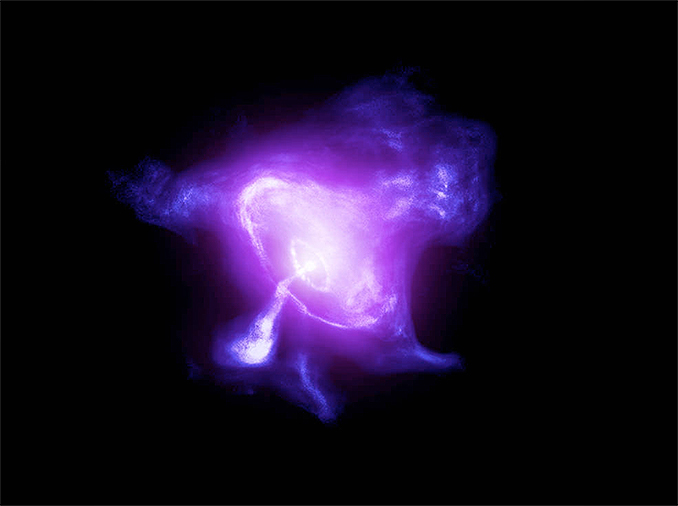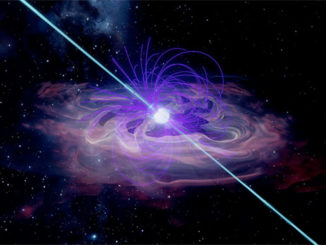
NASA’s Imaging X-ray Polarimetry Explorer – IXPE – satellite has helped scientists put together a detailed map of the Crab Nebula’s magnetic field, “revealing more of its inner workings than ever before,” the agency says.
The IXPE data shows the Crab Nebula’s magnetic field resembles that of the Vela Pulsar Wind Nebula, which features a rapidly rotating pulsar throwing off streams of particles traveling at nearly the speed of light. The fast-moving charged particles, swirling magnetic fields, shock waves and interactions with surrounding gas and dust combine to form a chaotic pulsar wind nebula.
IXPE observations of the Crab Nebula and its two-solar-mass pulsar found a donut-like toroidal shape similar to the Vela nebula. But measuring the polarisation of X-rays from the Crab, which indicates where the magnetic field is pointing in different regions, researchers were surprised to find areas of magnetic turbulence that were more patchy and asymmetrical than expected.
“This is a clear indication that even the more complex models developed in the past, with the use of advanced numerical techniques, do not fully capture the complexity of this object,” said Niccolò Bucciantini, lead author of a study in Nature Astronomy.



